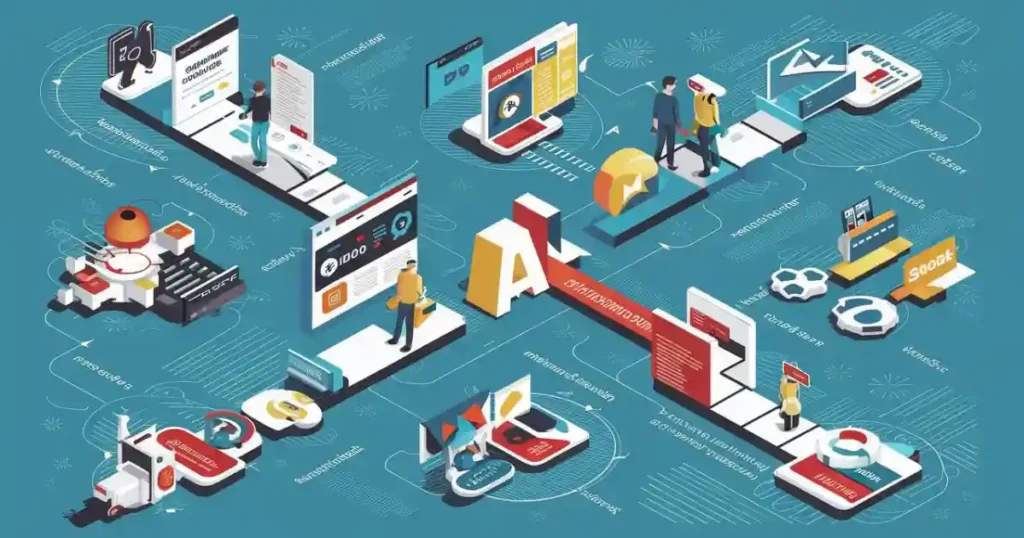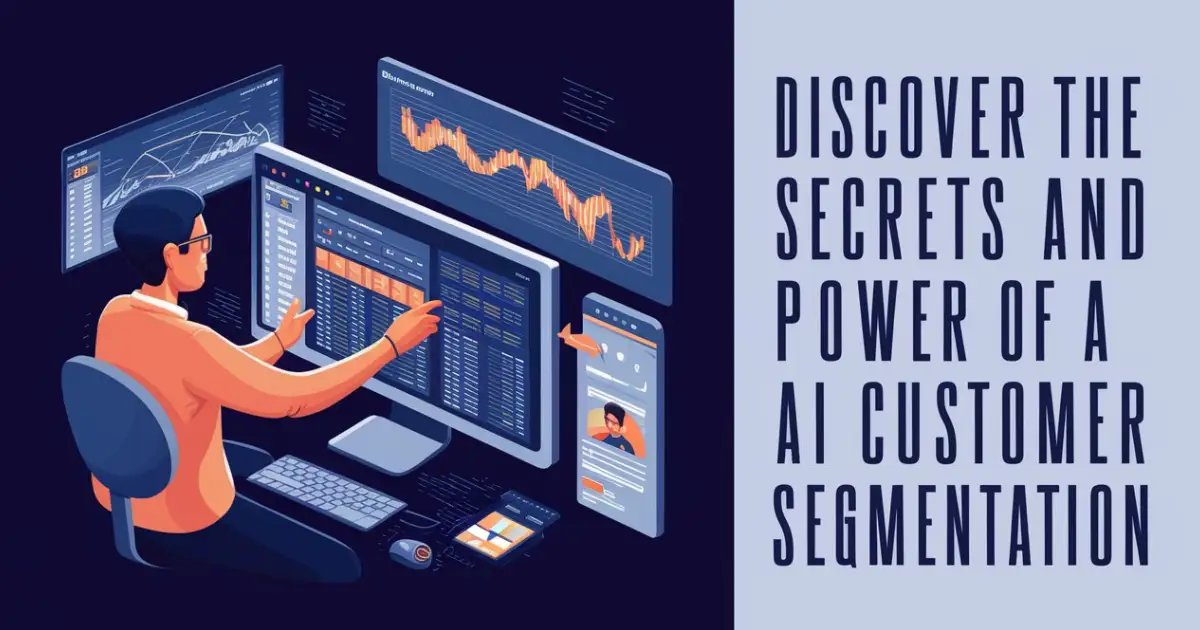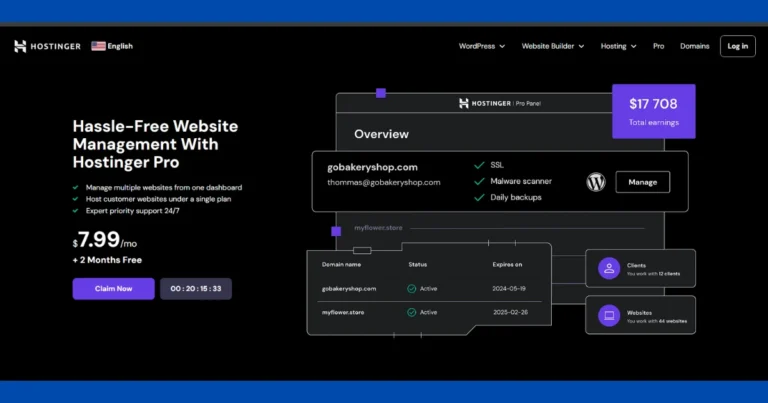In today’s fiercely competitive business landscape, staying ahead requires leveraging cutting-edge technologies. AI customer segmentation emerges as a transformative approach that significantly enhances the precision and effectiveness of marketing strategies. Unlike traditional methods that rely on broad demographics, AI-driven segmentation utilizes sophisticated algorithms and machine learning techniques to analyze vast amounts of customer data, uncovering nuanced patterns and behaviors.
This article delves into the world of AI customer segmentation, exploring its potential to double your sales within a 30-day timeframe. We’ll unveil the secrets behind this innovative approach, showcasing how AI empowers businesses to create highly targeted marketing campaigns that resonate with distinct customer needs and preferences.
By the end of this comprehensive guide, you’ll gain a clear understanding of:
- The fundamental principles of AI customer segmentation
- The benefits it offers for businesses of all sizes
- Practical strategies for implementing AI customer segmentation
- Real-world examples of successful AI segmentation in action
Table of Contents
Key Takeaways:
- AI customer segmentation utilizes machine learning to uncover hidden patterns in customer data, enabling more precise targeting.
- This approach leads to personalized marketing campaigns that resonate with distinct customer needs and preferences.
- AI customer segmentation offers numerous benefits, including increased sales, improved customer engagement, and optimized marketing ROI.
- Businesses can implement AI customer segmentation by collecting data, choosing the right tools, and integrating them with existing systems.
The Power of AI Customer Segmentation
Customer segmentation is a fundamental marketing strategy that involves dividing a broad customer base into smaller groups based on shared characteristics. AI customer segmentation takes this concept a step further by leveraging the power of artificial intelligence to create more precise and dynamic customer segments.
Unveiling the Secrets
Traditional segmentation methods often rely on static data, such as demographics, which can lead to inaccurate or outdated insights. AI, on the other hand, utilizes machine learning algorithms to analyze vast amounts of data, including:
- Purchase history
- Website behavior
- Social media interactions
- Customer feedback
By analyzing these data points, AI can identify complex patterns and hidden correlations that reveal a deeper understanding of customer behavior, preferences, and future buying tendencies. This allows businesses to create highly targeted marketing campaigns that resonate with each customer segment, ultimately driving higher conversion rates and sales.
Quote 1:
“AI customer segmentation is not just about grouping customers; it’s about understanding them on a deeper level. By uncovering hidden insights, we can personalize marketing messages and deliver exceptional customer experiences.”
Marketing Director, Fortune 500 Company
The Benefits of AI Customer Segmentation
Traditional segmentation methods, while valuable, often fall short in today’s dynamic market. AI customer segmentation offers a plethora of advantages that empower businesses to not only understand their customers better but also translate that understanding into tangible results. Let’s explore some key benefits:
1. Enhanced Customer Insights
One of the most significant benefits of AI customer segmentation is the ability to gain a deeper understanding of your customer base. AI algorithms can analyze vast amounts of data to uncover hidden patterns and correlations that traditional methods might miss. This allows you to:
- Identify customer segments with unique needs and preferences.
- Predict customer behavior and future buying tendencies.
- Uncover hidden customer pain points and opportunities for improvement.
For example, an e-commerce retailer might use AI customer segmentation to discover that a specific customer segment frequently purchases organic beauty products and reads articles about sustainable living. This insight allows the retailer to target this segment with personalized marketing campaigns promoting their organic beauty products and highlighting their commitment to sustainability.
Table 1: Benefits of AI Customer Segmentation
| Benefit | Description |
|---|---|
| Enhanced Customer Insights | Gain a deeper understanding of customer needs, preferences, and future behavior. |
| Increased Marketing ROI | Target the right customers with the right message at the right time, leading to higher conversion rates and a better return on investment. |
| Improved Customer Engagement | Deliver personalized experiences that resonate with each customer segment, fostering stronger relationships and loyalty. |
| Optimized Resource Allocation | Allocate marketing resources more efficiently by focusing on high-value customer segments. |
| Reduced Customer Churn | Identify at-risk customers and take proactive steps to retain them. |
2. Increased Marketing ROI
By enabling you to target the right customers with the right message at the right time, AI customer segmentation significantly improves your marketing ROI. Here’s how:
- Reduced wasted spending: You’ll no longer be broadcasting generic marketing messages to a broad audience. Instead, you’ll be able to tailor your campaigns to specific customer segments, maximizing the impact of your marketing budget.
- Higher conversion rates: Personalized marketing messages are more likely to resonate with customers, leading to increased website traffic, lead generation, and ultimately, sales.
- Improved customer lifetime value: By nurturing relationships with high-value customers, you can increase their repeat purchases and brand loyalty.
3. Enhanced Customer Engagement
In today’s digital age, customers expect personalized experiences. AI customer segmentation allows you to deliver exactly that. By understanding your customers’ individual needs and preferences, you can create marketing campaigns that are more relevant and engaging. This leads to:
- Increased customer satisfaction: When customers feel like you understand them, they’re more likely to be satisfied with your brand.
- Stronger customer relationships: Personalized interactions foster trust and loyalty, leading to long-term customer relationships.
- Improved brand advocacy: Satisfied customers are more likely to recommend your brand to others, driving organic growth.
How to Implement AI Customer Segmentation
The potential of AI customer segmentation is undeniable, but how do you actually put it into action? Here’s a step-by-step guide to get you started:
1. Define Your Goals
Before diving into the technical aspects, it’s crucial to define your goals for implementing AI customer segmentation. What do you hope to achieve? Some common goals include:
- Increasing sales and revenue
- Improving customer retention
- Boosting marketing ROI
- Personalizing customer experiences
By clearly defining your goals, you can tailor your AI segmentation strategy to achieve the desired results.
2. Collect and Prepare Your Data
The success of AI customer segmentation hinges on the quality and quantity of data you have available. Here are some key data sources to consider:
- Customer Relationship Management (CRM) systems: This data includes customer demographics, purchase history, and communication history.
- Website analytics: Track website behavior, such as page views, product interactions, and time spent on specific pages.
- Social media data: Utilize social media platforms to gather insights into customer preferences and brand sentiment.
- Customer surveys and feedback: Collect valuable information directly from your customers through surveys and feedback forms.
Once you’ve collected your data, it’s crucial to clean and organize it. This ensures the accuracy and effectiveness of your AI models.
3. Choose the Right AI Tools
Several AI platforms offer customer segmentation capabilities. Here are some factors to consider when choosing the right tool for your business:
- Features and Functionality: Ensure the tool provides the functionalities you need, such as data analysis, segmentation capabilities, and reporting tools.
- Ease of Use: The platform should be user-friendly and accessible for both technical and non-technical users within your organization.
- Scalability: Choose a tool that can scale with your business needs as your customer base grows.
- Integration capabilities: Ensure the AI tool can integrate seamlessly with your existing CRM, marketing automation, and other relevant systems.
Quote 2:
“The key to successful AI customer segmentation lies not just in the technology but also in having the right data and expertise. Invest in data quality and choose an AI tool that aligns with your specific business goals.”
AI Consultant, Marketing Technology Firm
Popular AI Customer Segmentation Tools
Here are some popular AI customer segmentation tools to consider:
- IBM Watson Marketing
- Google Cloud AI Platform
- Microsoft Azure Customer Insights
- Adobe Marketing Cloud
- SAS Customer Intelligence 360
This is not an exhaustive list, and the best tool for your business will depend on your specific needs and budget.
4. Integrate AI Tools with Existing Systems
For seamless operation, ensure your chosen AI tools integrate with your existing CRM, marketing automation platforms, and other relevant systems. This enables real-time data sharing and more accurate segmentation. Here’s how integration benefits your strategy:
- Automated Data Flow: Streamline data transfer between systems, eliminating manual data entry and reducing the risk of errors.
- Real-Time Insights: Gain access to up-to-date customer data, allowing for more dynamic and personalized marketing campaigns.
- Improved Efficiency: Automate tasks and optimize workflows, freeing up your team’s time to focus on strategic initiatives.
5. Train Your Staff
Successfully implementing AI customer segmentation requires a workforce equipped to utilize the tools and interpret the insights generated. Here are some key aspects of staff training:
- Understanding AI Tools: Train your team on how to use the chosen AI platform, including data upload, segmentation creation, and reporting functionalities.
- Data Analysis: Equip your staff with skills to analyze customer data effectively, identify trends, and draw meaningful insights.
- Marketing Strategy Development: Train your marketing team to leverage AI segmentation for campaign creation, content personalization, and targeted messaging.
Building a Culture of Data-Driven Decision Making
Encouraging a data-driven decision-making culture within your organization is crucial to maximize the benefits of AI customer segmentation. This involves:
- Transparency and Communication: Ensure all stakeholders understand how customer data is used and how AI insights inform marketing strategies.
- Data Accessibility: Provide easy access to relevant data and reports so team members can make informed decisions.
- Continuous Learning: Foster a culture of continuous learning and encourage employees to stay updated on the latest AI trends and best practices.
Table 2: Key Considerations for Implementing AI Customer Segmentation
| Step | Description |
|---|---|
| Define Goals | Clearly define your objectives for implementing AI customer segmentation. |
| Collect & Prepare Data | Gather high-quality data from various sources and ensure it’s clean and organized. |
| Choose AI Tools | Select an AI platform that offers the functionalities, ease of use, scalability, and integration capabilities needed for your business. |
| Integrate AI Tools | Integrate your chosen AI tools with existing systems for real-time data sharing and improved efficiency. |
| Train Your Staff | Equip your workforce with the skills to utilize AI tools, analyze data, and develop data-driven marketing strategies. |

AI Customer Segmentation Examples
Understanding how businesses leverage AI customer segmentation in practice can be highly insightful. Here are a few real-world examples showcasing its effectiveness:
Example 1: E-commerce Retailer Boosts Conversions
A leading e-commerce retailer implemented AI customer segmentation to analyze purchase history, browsing behavior, and demographics. This allowed them to identify distinct customer segments, such as:
- Price-conscious shoppers: This segment prioritized affordability and value.
- Brand-loyal customers: This segment consistently purchased specific brands.
- Trendsetters: This segment sought out new and innovative products.
By tailoring marketing campaigns to each segment, the retailer achieved significant results:
- Increased conversion rates by 25% through targeted product recommendations and personalized promotions.
- Enhanced customer satisfaction by delivering relevant product suggestions and avoiding generic marketing messages.
Example 2: Subscription Service Reduces Churn
A subscription service provider employed AI customer segmentation to understand their subscriber base better. They segmented customers into categories like:
- Active users: Engaged users who frequently utilized the service.
- At-risk users: Users exhibiting signs of potential churn, such as decreased usage.
- New users: Customers who recently subscribed to the service.
Leveraging AI insights, the company implemented targeted strategies:
- Personalized content and recommendations for active users to maintain engagement.
- Win-back campaigns with special offers for at-risk users to incentivize continued subscription.
- Onboarding programs tailored to new users to ensure a smooth and positive experience.
These efforts resulted in a 30% reduction in churn rate and a significant boost in customer retention.
Example 3: Financial Services Firm Enhances Customer Engagement
A financial services firm utilized AI customer segmentation to analyze customer transaction data. This enabled them to create highly targeted financial products tailored to individual needs. They identified segments such as:
- Young investors: Focused on building wealth for the long term.
- Risk-averse individuals: Prioritized security and stable returns.
- High-net-worth clients: Sought out sophisticated investment opportunities.
By offering personalized financial advice and relevant product recommendations, the firm achieved:
- 40% increase in customer engagement through targeted communication and relevant financial solutions.
- Substantial rise in sales due to meeting the specific investment needs of each customer segment.
These examples demonstrate the transformative power of AI customer segmentation in driving sales, improving customer engagement, and fostering long-term business growth.
The Future of AI Customer Segmentation
The field of AI customer segmentation is constantly evolving, with exciting advancements on the horizon. Here are some key trends to watch out for:
1. Increased Focus on Predictive Analytics
AI customer segmentation is moving beyond historical data analysis and towards predictive capabilities. This allows businesses to:
- Anticipate customer needs and preferences: By analyzing past behavior and market trends, AI can predict future customer actions and buying tendencies.
- Proactive customer engagement: Businesses can leverage these insights to engage with customers before they even express a need, fostering stronger relationships and loyalty.
- Personalized product recommendations: AI can predict which products or services each customer segment is most likely to be interested in, leading to more effective upselling and cross-selling opportunities.
2. Rise of AI-powered Dynamic Content Optimization
The future holds even greater personalization with the rise of AI-powered dynamic content optimization. This technology allows for:
- Real-time personalization: Content on websites, emails, and marketing materials can be dynamically adjusted based on individual customer data and behavior in real-time.
- Highly targeted messaging: Customers will receive content that is not only relevant to their segment but also tailored to their specific needs at that particular moment.
- Seamless customer journeys: AI can optimize the entire customer journey, ensuring a cohesive and personalized experience across all touchpoints.
3. Integration with Customer Relationship Management (CRM) Systems
A growing trend is the seamless integration of AI customer segmentation tools with CRM systems. This allows for:
- Automated customer segmentation: CRM data can be automatically fed into AI platforms, streamlining the segmentation process and ensuring real-time updates.
- Improved customer profiles: AI can enrich customer profiles within CRM systems with deeper insights and behavioral predictions.
- Data-driven decision making: Sales and marketing teams can leverage a unified view of the customer, enabling data-driven decisions for personalized interactions and targeted outreach.
Table 3: Future Trends in AI Customer Segmentation
| Trend | Description |
|---|---|
| Predictive Analytics | AI will predict future customer needs and preferences, allowing for proactive engagement. |
| AI-powered Dynamic Content Optimization | Content will be dynamically adjusted based on individual customer data and behavior in real-time. |
| Integration with CRM Systems | AI customer segmentation tools will integrate seamlessly with CRM systems for streamlined workflows and data-driven decision making. |
By embracing these future trends, businesses can unlock the full potential of AI customer segmentation and create an unparalleled level of customer engagement and satisfaction.
FAQ
Q: How much does AI customer segmentation cost?
A: The cost of AI customer segmentation varies depending on the chosen tools, data storage needs, and the complexity of your implementation. However, many platforms offer tiered pricing plans to suit different business budgets.
Q: Is AI customer segmentation difficult to implement?
A: While there is a learning curve involved, AI customer segmentation tools are designed to be user-friendly. Additionally, many vendors offer implementation support and training resources.
Q: What are the ethical considerations of AI customer segmentation?
A: It’s crucial to ensure responsible data collection and usage practices that comply with data privacy regulations. Transparency with customers regarding how their data is used is paramount.
Conclusion
AI customer segmentation represents a powerful transformation in marketing strategies. By leveraging the power of AI to gain deeper customer insights and create highly targeted campaigns, businesses can dramatically improve sales, customer engagement, and overall business success. As this technology continues to evolve, the possibilities for personalized customer experiences become even more limitless.








